Spitz Dog | Breed Profile, Prices, 6 Types, Facts, Care Tips, Health Issues
Curious about Spitz dogs? From their distinct appearance to their rich history, Spitz dogs encompass a diverse group of breeds that have captured the hearts of dog enthusiasts worldwide. Whether you’re considering adding a Spitz companion to your family or simply want to learn more about these fascinating breeds, this comprehensive guide covers everything you need to know. Explore the unique traits, cultural significance, health considerations, and care tips that make Spitzs stand out in the canine world.
Spitz Dog
Spitz dogs belong to a distinctive group of canine breeds known for their pointed ears, bushy tails, and thick double coats. Their unique appearance and charming personalities have made them popular among dog enthusiasts worldwide. These breeds have a history dating back many centuries, originating in different regions across the globe.

The term “Spitz” originates from a German word meaning “pointed,” which describes the characteristic pointed ears of these dogs. They have adapted to various environments, from the Arctic to temperate climates, showcasing their versatility.
One of the defining features of Spitz dogs is their fox-like face, characterized by a pointed snout, almond-shaped eyes, and erect ears. Their dense double coat, composed of a soft undercoat and a longer outer coat, serves to insulate and protect them from harsh weather conditions.

Another distinct trait is their plumed tail that curls over their backs, adding to their elegant appearance. While the coat colours vary among different Spitz breeds, they often display a wide range of hues, from pure white to vibrant shades of red and brown.
Numerous breeds fall under the Spitz category, each possessing unique qualities. The Pomeranian, for instance, is a small-sized breed with a lively personality and remarkable intelligence. The Siberian Husky, known for its striking blue eyes and robust build, is particularly well-suited for cold climates and is admired for its endurance.
Characteristics of Spitz Dogs
Here are some key characteristics of Spitz dogs:
| Characteristic | Description |
|---|---|
| Appearance | Fox-like features, pointed ears, almond-shaped eyes, double coat, bushy tail that curls over the back. |
| Size | Various sizes depending on the specific Spitz breed, ranging from small (Pomeranian) to medium (Samoyed) to larger (American Eskimo Dog). |
| Temperament | Friendly, intelligent, loyal to their families, can be reserved around strangers, independent, and sometimes stubborn. |
| History and Origin | Ancient breed with origins in Arctic regions, used for tasks like sledding and hunting. |
| Health and Care | Regular exercise, grooming to prevent matting and shedding, routine vet check-ups, balanced diet. |
| Training and Socialization | Early training and socialization are essential, respond well to positive reinforcement techniques. |
| Family Compatibility | Typically good with children, protective without being overly aggressive, thrive in active and loving households. |
Spitz Dog Puppies

Spitz dog puppies are bundles of joy that bring a burst of energy and playfulness to any household. Their adorable appearance, with their fluffy coats and endearing expressions, instantly captures hearts. Watching these little furballs explore their surroundings and learn new things is a heartwarming experience that creates lasting memories for families and individuals alike.
German Spitz Dog
The German Spitz dog is a breed that exudes charm and intelligence. With their pointed ears and plush coats, they have an air of elegance about them. Known for their affectionate nature and keen sense of loyalty, German Spitz dogs make wonderful companions for those seeking a loving and devoted furry friend.
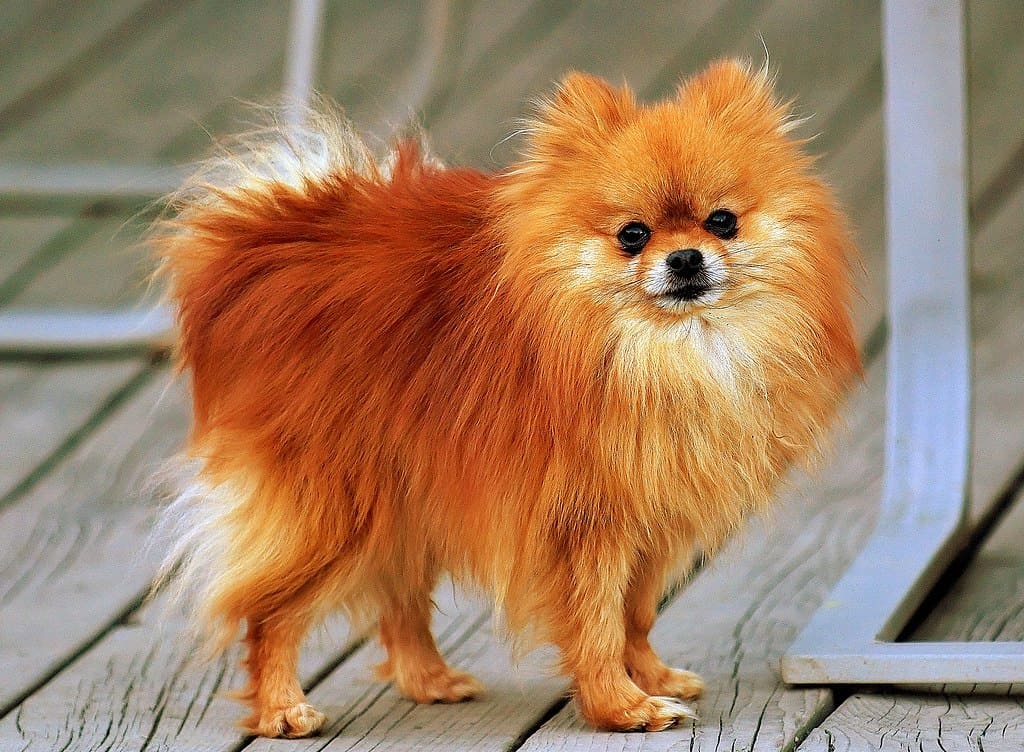
Culture Spitz Dog
Cultural Spitz dogs are fascinating companions that have made their mark in various parts of the world. From the majestic Finnish Spitz to the regal Japanese Spitz, these breeds carry with them a piece of their respective cultures. Their roles and characteristics have been shaped by their environments and the people who cherished them throughout history.

Japanese Spitz Dog
The Japanese Spitz dog is a delightful breed known for its snowy white coat and friendly disposition. These fluffy companions thrive on human interaction and are quick to form strong bonds with their families. With their bright eyes and plumed tails, Japanese Spitz dogs light up any room they enter.
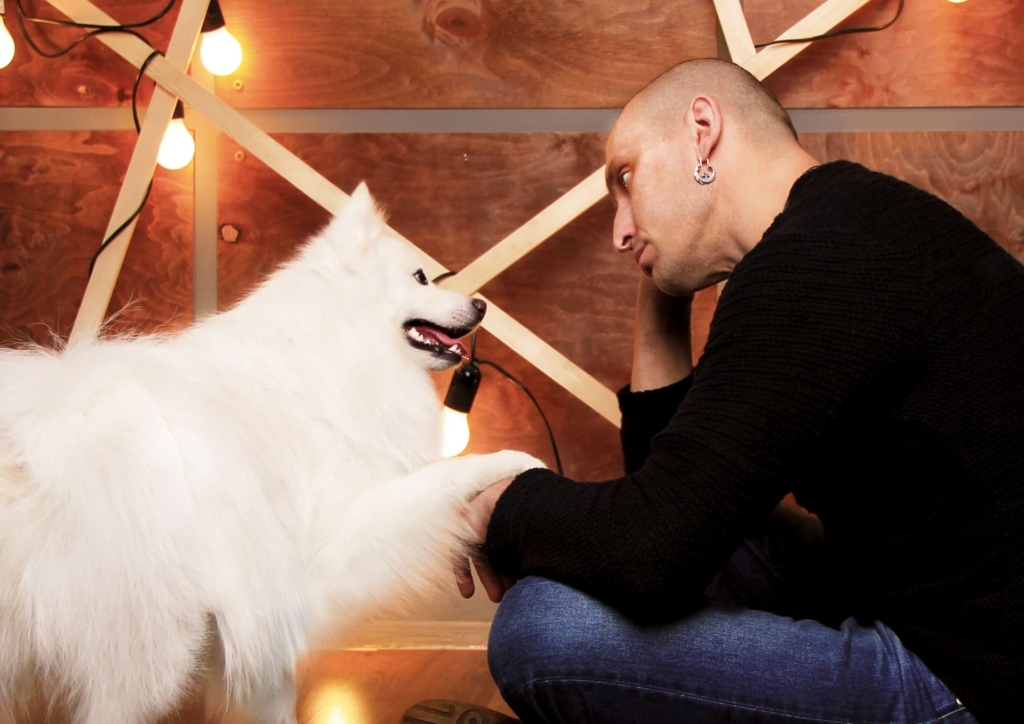
Indian Spitz Dog
The Indian Spitz dog is a beloved breed that holds a special place in the hearts of many dog enthusiasts. With their compact size and lively personalities, they make wonderful companions for apartment dwellers and families alike. Their playful nature and adaptability to various living situations make them a popular choice among dog lovers.

Exotic Spitz Dog
Exotic Spitz dogs come in a captivating array of breeds, each with its own unique traits and origins. From the striking Siberian Husky to the elegant Alaskan Malamute, these dogs offer a touch of the extraordinary to those fortunate enough to share their lives with them. Their allure lies in their fascinating histories and stunning appearances.

Finnish Spitz Dog
The Finnish Spitz dog is a national treasure of Finland, known for its fox-like appearance and distinctive vocalizations. These dogs were originally bred for hunting purposes and have a keen sense of alertness. With their vibrant red coats and lively personalities, Finnish Spitzs are both charming companions and guardians.
Pomeranian Spitz Dog

Pomeranian Spitz dogs, often referred to as “Poms,” are tiny bundles of energy with personalities that outshine their size. Their luxurious coats and bright eyes make them irresistible to dog lovers. Despite their small stature, Pomeranians possess a big heart and are known for their extroverted and playful nature.
Eskimo Spitz Dog
The Eskimo Spitz dog, also known as the American Eskimo Dog, boasts a stunning white coat and a cheerful disposition. These dogs are versatile and excel in various activities, from agility competitions to simply being affectionate family companions. With their intelligence and eagerness to please, Eskimo Spitz dogs make training a rewarding experience.
White Spitz Dog
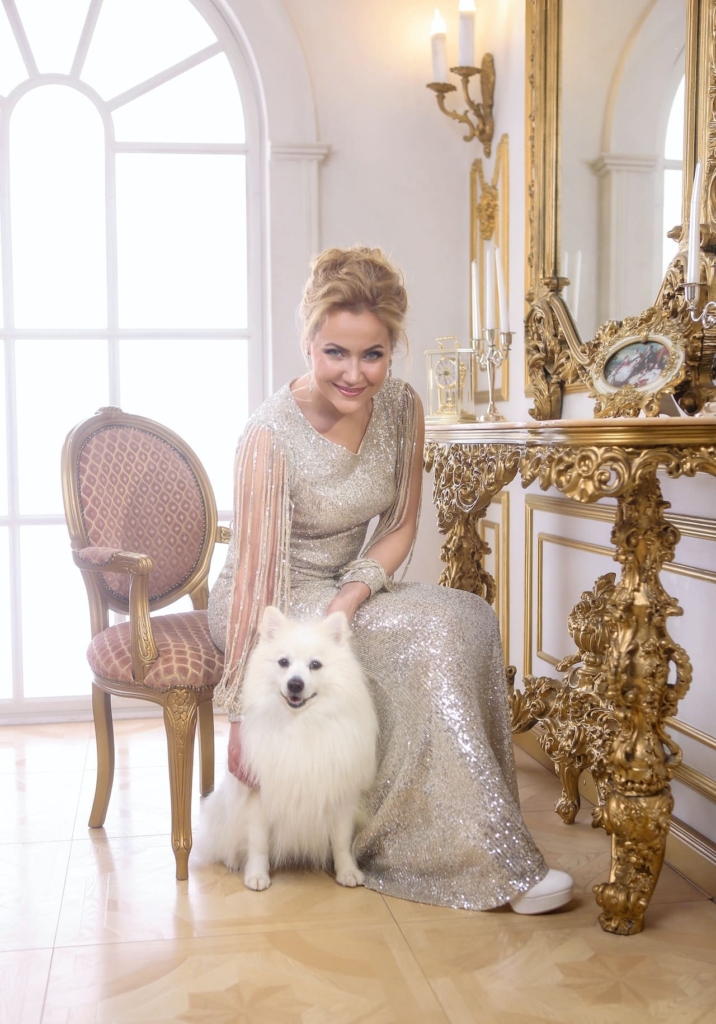
White Spitz dogs encompass several breeds that share the common trait of a dazzling white coat. From the elegant Samoyed to the charming Japanese Spitz, these dogs are admired for their pristine appearance. Their coats symbolize purity and evoke a sense of elegance that captures attention wherever they go.
Black Spitz Dog
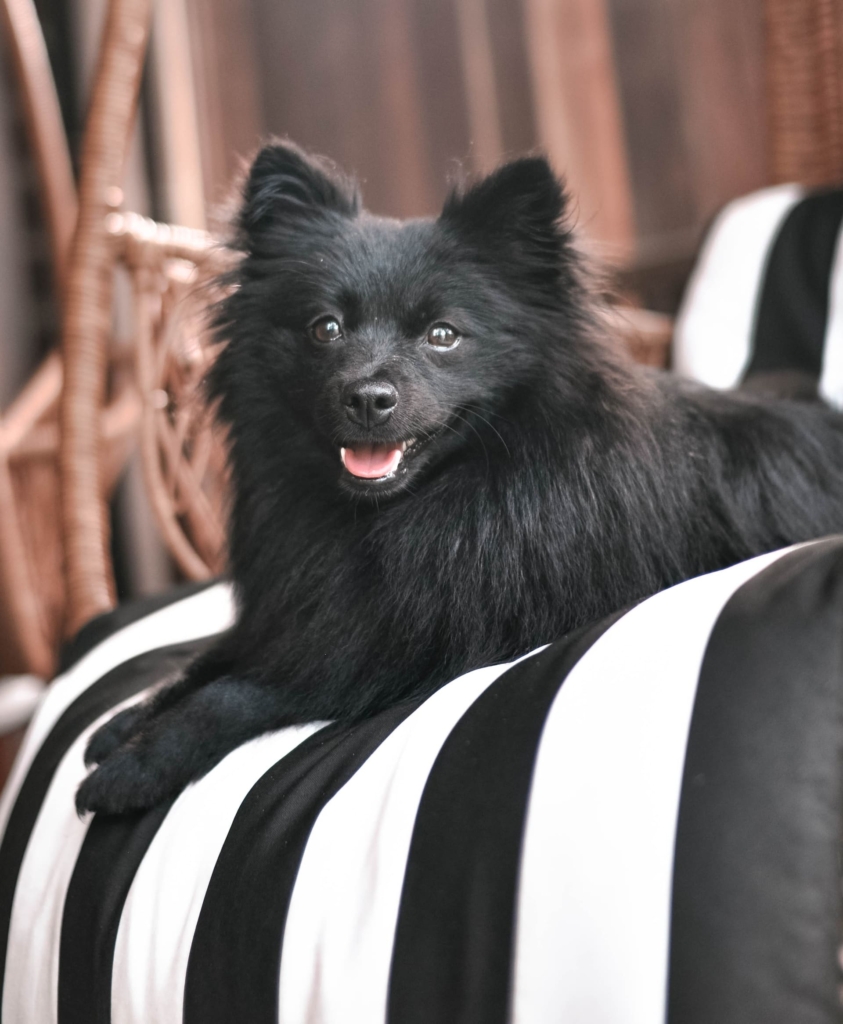
Black Spitz dogs possess a striking and bold appearance that sets them apart. Their dark coats exude a sense of mystery and allure. Breeds like the Chow Chow and the Finnish Lapphund showcase the elegance and charm that a black Spitz coat can bring, making them stand out in any setting.
Baby Indian Spitz Dog
Baby Indian Spitz dogs are the epitome of cuteness. Their tiny size, soft fur, and innocent eyes melt hearts instantly. These little bundles of joy bring laughter and warmth to homes, reminding us of the joy that comes from nurturing a young life.
Mini Spitz Dog
Mini Spitz dogs are pint-sized versions of their larger counterparts, offering all the charm and personality in a more compact package. Their small stature makes them well-suited for apartment living or for those who prefer a more portable canine companion. Despite their size, mini Spitzs have big hearts and a world of affection to share.

Top 6 Spitz Dog Breeds
Spitz dogs encompass a diverse group of breeds, each characterized by their distinct physical attributes, temperaments, and historical roles. Originating from various parts of the world, these breeds share common traits such as pointed ears, bushy tails, and thick double coats. Here are some prominent Spitz breeds:
1. Siberian Husky:
Siberian Huskies are medium-sized dogs originally bred for sled-pulling in cold climates. They possess striking features such as captivating blue or heterochromatic eyes and a thick, insulating coat. Huskies are sociable and friendly, often getting along well with other dogs and children. Their endurance and loyalty make them popular choices for both working roles and family companionship.

2. Alaskan Malamute:
With a strong and robust build, Alaskan Malamutes are well-suited for heavy-duty tasks like sled pulling and hauling. These dogs have a dense double coat, erect ears, and a distinctive “wolf-like” appearance. Despite their impressive size, Alaskan Malamutes are gentle and affectionate with their families, often displaying a calm and dignified demeanour.
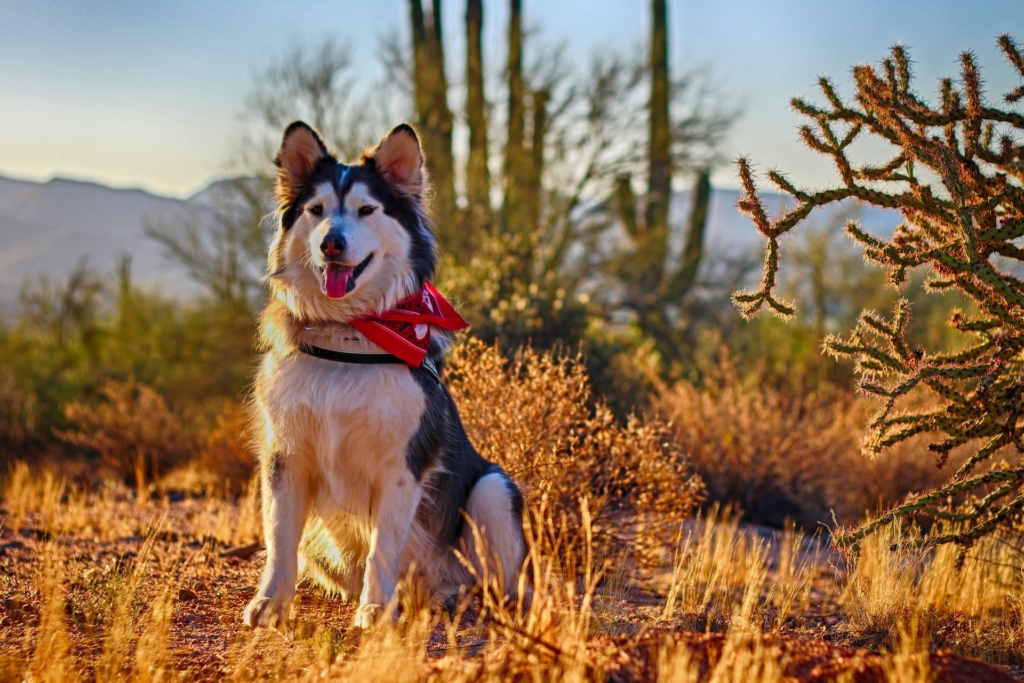
3. Akita Inu:
Originating from Japan, the Akita Inu is renowned for its loyalty, bravery, and dignified presence. They have a substantial build and a thick double coat that provides protection against harsh weather. Akita Inus are often reserved with strangers but form strong bonds with their families, making them excellent guard dogs and devoted companions.
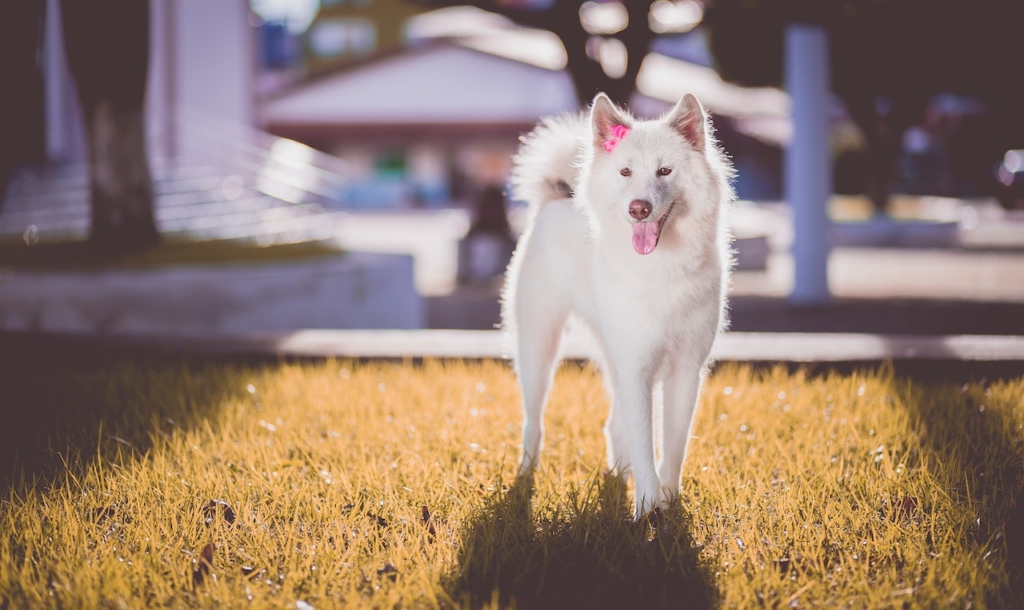
4. Chow Chow:
Chow Chows stand out with their lion-like mane and distinctive blue-black tongue. They have a unique aloofness and independence, which is balanced by their deep loyalty to their owners. Chow Chows are known for their dignified demeanour and can make excellent watchdogs due to their inherent protective instincts.

5. Samoyed:
Samoyeds, often referred to as “smiling Sammies,” are known for their cheerful expressions and fluffy white coats. They have a gentle and affectionate nature, making them wonderful family dogs. Originally bred as working dogs in Siberia, Samoyeds have a friendly disposition and a penchant for forming strong bonds with their human companions.

6. American Eskimo Dog:
The American Eskimo Dog, despite its name, is not from Alaska but is rather a charming and intelligent breed with a white double coat. They are versatile performers in various dog sports and activities due to their trainability and agility. American Eskimo Dogs are playful and devoted to their families, often excelling as both companions and performers.

History of Spitz Dog
The history of Spitz dogs is a fascinating journey that spans across different cultures and regions. These breeds have ancient roots, dating back centuries, and have played diverse roles in human society. From the Arctic tundras to the temperate climates, Spitzs have adapted and evolved alongside humans, becoming indispensable companions for various tasks. Their origins are intertwined with hunting, herding, guarding, and even providing warmth in cold climates.
Appearance of Spitz Dog

The appearance of Spitz dogs is truly captivating, with distinct features that set them apart from other breeds. One of the most noticeable traits is their pointed ears, which give them a fox-like appearance. Their bushy tails, often carried over their backs, add to their elegant allure. Spitzs boast double coats, consisting of a soft undercoat and a longer outer coat that provides insulation and protection from the elements. This dense coat can come in a variety of colours, from pristine white to vibrant reds and browns, reflecting the breed’s diversity.
Temperament of Spitz Dog
The temperament of Spitz dogs varies widely among different breeds, each with its own unique set of characteristics. However, a common thread among many Spitz breeds is their intelligence and independence. These dogs are often known for their strong-willed nature, which can sometimes be mistaken for aloofness. Yet, beneath their independent exterior lies a deep loyalty to their families. Spitzs are typically alert and make excellent watchdogs due to their protective instincts.
Behaviour of Spitz Dog

The behaviour of Spitz dogs is a blend of their history, appearance, and temperament. Many Spitz breeds were bred for specific tasks, such as herding reindeer or pulling sleds, and these instincts may still be present in their behaviour today. Their active and energetic nature often requires regular exercise to keep them happy and healthy. Some Spitz breeds may have a tendency to be vocal, using their voices to communicate and alert their owners.
Spitz Dog Price
The price of Spitz dogs varies; in the United States, it ranges from $600 to $3,000, while in India, it’s approximately ₹5,000 to ₹20,000. These price differences depend on factors like breed, lineage, and breeder reputation in each country.
Spitz Dog Price In United States:
In the United States, the price of Spitz dogs can vary significantly depending on factors such as the breed, lineage, and breeder reputation. On average, you can expect to pay anywhere from $600 to $3,000 for a Spitz dog.

Spitz Dog Price In United Kingdom:
In the United Kingdom, Spitz dog prices are influenced by similar factors as in the US. Generally, the cost for a Spitz dog in the UK can range from £400 to £1,500. Breeds such as the Japanese Spitz and the Samoyed may cost higher.
Spitz Dog Price In Australia:
In Australia, the price of Spitz dogs can vary based on breed availability and demand. On average, you might expect to pay around $800 to $2,500 for a Spitz dog. Breeds like the Siberian Husky and the Alaskan Malamute may cost higher.
Spitz Dog Price In Canada:
In Canada, Spitz dog prices are comparable to those in the United States. The cost can range from CAD 800 to CAD 3,000, depending on the breed and breeder’s reputation. Breeds like the Pomeranian and the Canadian Eskimo Dog may cost higher.
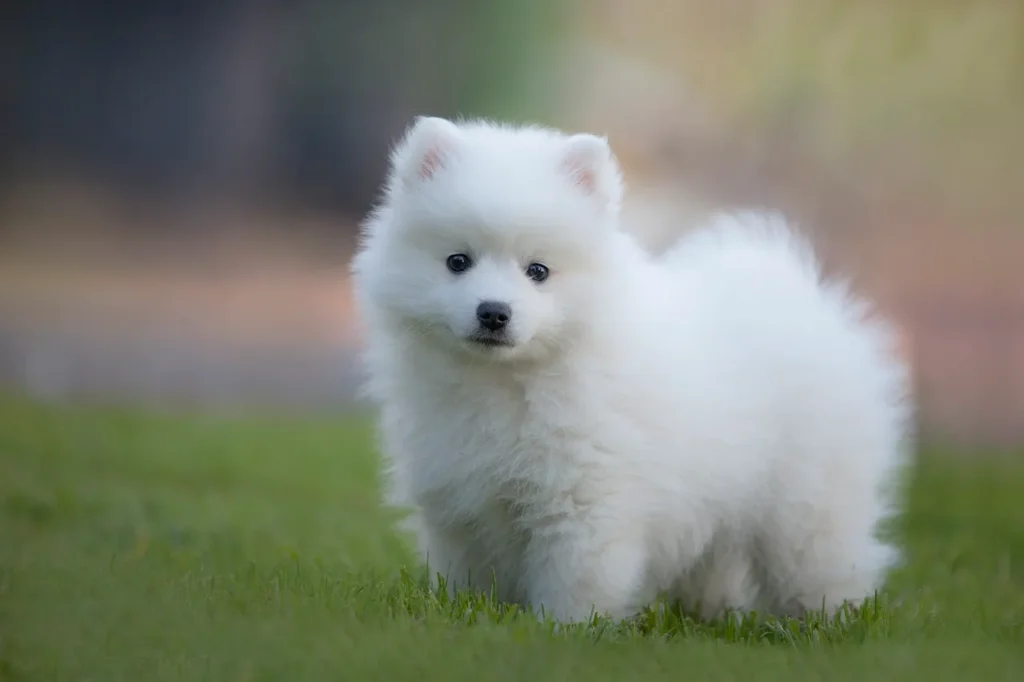
Spitz Dog Price In India:
In India, Spitz dog prices can vary widely based on location, breed popularity, and breeder practices. On average, you might find Spitz dogs priced between ₹5,000 to ₹20,000. Breeds like the Indian Spitz may cost higher.
Spitz Dog Price In Germany:
In Germany, where the term “Spitz” originates, prices for Spitz dogs can vary based on breed and breeder reputation. On average, you might expect to pay around €500 to €2,000 for a Spitz dog.
Spitz Dog Price In Japan:
In Japan, Spitz are highly regarded, and prices can reflect their cultural significance. Japanese Spitz dogs, for example, might range from ¥50,000 to ¥150,000. The Akita Inu, another breed with historical importance in Japan, could also have a higher price range due to its cultural significance.

Spitz Dog Price In Kolkata
The price of Spitz dogs in Kolkata can vary based on factors like breed popularity, lineage, and breeder reputation. On average, you might expect to pay around ₹5,000 to ₹15,000 for a Spitz dog in Kolkata.
German Spitz Price In Guwahati
In Guwahati, the cost of a German Spitz dog may align with the general price range in India, which typically ranges from ₹15,000 to ₹40,000 or more. However, local variations and individual breeder pricing can come into play.
Indian Spitz Price In Delhi
In Delhi, the price of an Indian Spitz dog may fall within the general price range in India, typically ranging from ₹5,000 to ₹20,000 or more. Local variations and individual breeder pricing can impact the cost.

Spitz Dog Price In Kerala
In Kerala, the price of Spitz dogs can range from ₹4,000 to ₹12,000, depending on the breed, age, and breeder credibility. Factors like availability and demand also influence the variations in prices.
Indian Spitz Dog Price
The price of an Indian Spitz dog in USD and INR can vary based on factors like the dog’s age, pedigree, breeder reputation, and location. On average, the cost of an Indian Spitz dog can range from approximately $150 to $500 USD or ₹10,000 to ₹35,000 INR in India.
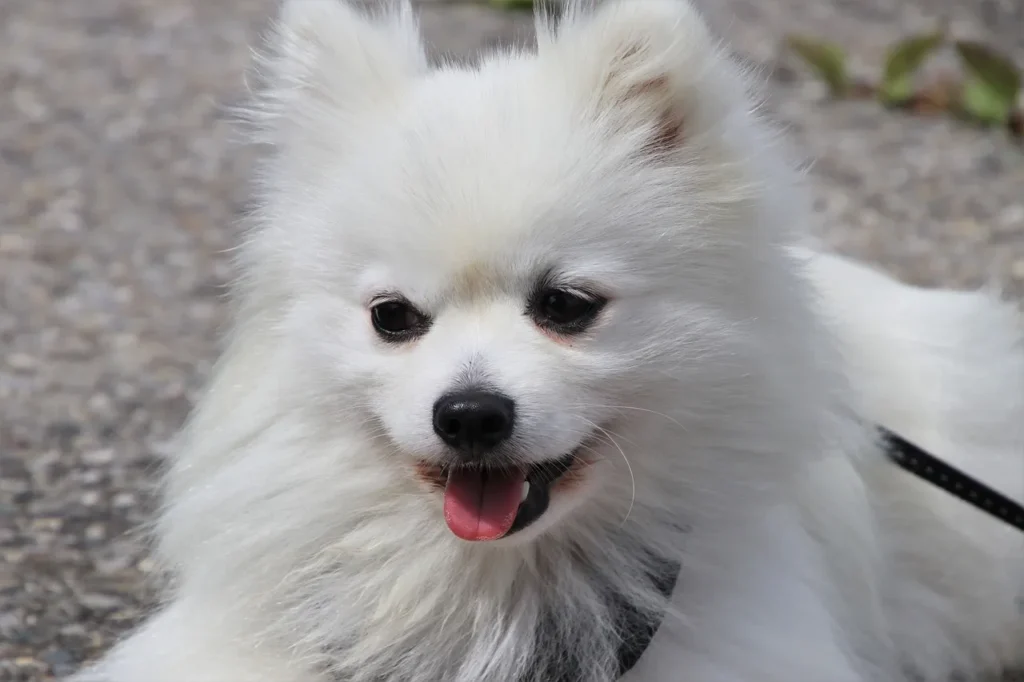
Indian Spitz Dog Price In India
Indian Spitz dog prices in India can be around ₹4,000 to ₹20,000. This price range is influenced by factors like the dog’s age, gender, lineage, and the region where it’s being purchased.
German Spitz Price
The price of a German Spitz dog can vary based on factors such as the dog’s age, pedigree, breeder reputation, and location. On average, you can expect to pay between $800 and $2,500 for a German Spitz puppy in the USA. In India, the price for a German Spitz puppy typically ranges from ₹15,000 to ₹40,000 or more.
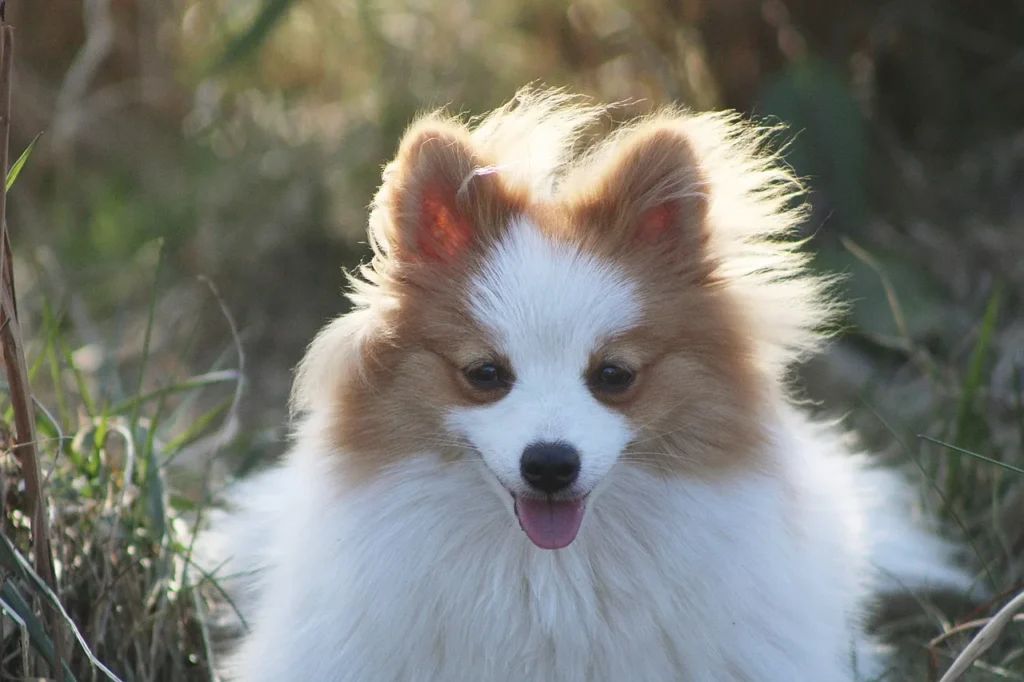
German Spitz Dog Price In India
The price of a German Spitz dog in India can vary from ₹10,000 to ₹30,000, depending on factors such as breed purity, lineage, and breeder reputation. German Spitz dogs with show-quality lineage might be at the higher end of the price range.
Culture Spitz Dog Price
The price of Culture Spitz dogs can vary significantly based on breed rarity and demand. In India, prices may range from ₹15,000 to ₹50,000, while in the United States, they can vary from $500 to $2,000.
Japanese Spitz Price
The price of a Japanese Spitz dog in USD and INR can vary based on factors such as the dog’s age, pedigree, breeder reputation, and location. On average, the cost of a Japanese Spitz dog can range from approximately $800 to $3,000 USD or ₹50,000 to ₹2,00,000 INR in India.

Japanese Spitz Price In India
The price of a Japanese Spitz dog in India can vary depending on factors such as the dog’s age, pedigree, and the reputation of the breeder. On average, you can expect to pay around ₹30,000 to ₹60,000 or more for a Japanese Spitz puppy.
Finnish Spitz Price
The Finnish Spitz, known for its distinctive appearance and hunting skills, is priced higher than some other breeds. In the United States, you can anticipate a price range of approximately $1,200 to $3,500 or more for a Finnish Spitz puppy. In India, where they are less common, the cost generally falls between ₹85,000 and ₹2,45,000 or more.

Eskimo Spitz Price
Eskimo Spitz dogs, with their fluffy white coats and friendly nature, can be found in a moderate price range. In the United States, Eskimo Spitz puppies typically range from $1,000 to $3,000 or more. In India, the cost usually varies from ₹70,000 to ₹2,10,000 or more.
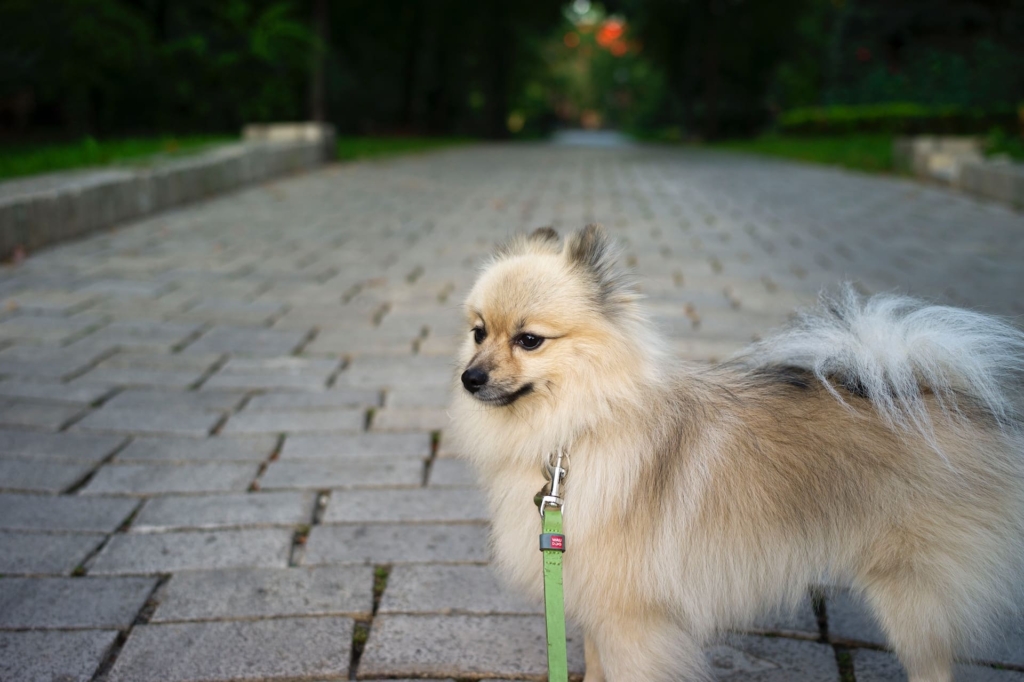
Spitz Dog Puppy Price
The price of a Spitz dog puppy can vary based on factors like breed, age, and location. On average, you might expect to pay around ₹3,000 to ₹20,000 for a Spitz dog puppy, depending on its lineage and breeder reputation.
Indian Spitz Puppy Price In India
The price of an Indian Spitz puppy in India can vary based on factors such as the dog’s age, lineage, and breeder reputation. On average, you can expect to pay between ₹10,000 to ₹30,000 or more for an Indian Spitz puppy.
Spitz Dog Prices In Major Indian Cities
Here are approximate prices of Spitz dogs in Major Indian Cities:
| City | Spitz Dog Price (INR) |
|---|---|
| Spitz Price In Delhi | ₹5,000 – ₹20,000 |
| Spitz Price In Mumbai | ₹6,000 – ₹25,000 |
| Spitz Price In Kolkata | ₹5,000 – ₹20,000 |
| Spitz Price In Chennai | ₹6,000 – ₹22,000 |
| Spitz Price In Bangalore | ₹6,500 – ₹23,000 |
| Spitz Price In Hyderabad | ₹5,500 – ₹21,000 |
| Spitz Price In Pune | ₹6,000 – ₹24,000 |
| Spitz Price In Ahmedabad | ₹5,500 – ₹20,000 |
| Spitz Price In Jaipur | ₹5,000 – ₹21,000 |
| Spitz Price In Lucknow | ₹5,000 – ₹19,000 |
| Spitz Price In Chandigarh | ₹5,500 – ₹22,000 |
| Spitz Price In Bhopal | ₹5,500 – ₹20,000 |
| Spitz Price In Patna | ₹5,000 – ₹19,500 |
| Spitz Price In Kochi | ₹5,500 – ₹21,000 |
| Spitz Price In Guwahati | ₹5,000 – ₹19,500 |
| Spitz Price In Indore | ₹5,500 – ₹20,500 |
| Spitz Price In Visakhapatnam | ₹6,000 – ₹22,000 |
| Spitz Price In Surat | ₹5,500 – ₹21,000 |
| Spitz Price In Nagpur | ₹5,500 – ₹20,000 |
| Spitz Price In Coimbatore | ₹6,000 – ₹23,000 |
| Spitz Price In Kanpur | ₹5,000 – ₹19,500 |
| Spitz Price In Jaipur | ₹5,000 – ₹21,000 |
| Spitz Price In Vadodara | ₹5,500 – ₹20,500 |
| Spitz Price In Ranchi | ₹5,000 – ₹19,000 |
| Spitz Price In Jodhpur | ₹5,000 – ₹20,000 |
| Spitz Price In Bhubaneswar | ₹5,500 – ₹21,000 |
| Spitz Price In Varanasi | ₹5,000 – ₹19,500 |
| Spitz Price In Agra | ₹5,000 – ₹20,000 |
| Spitz Price In Ludhiana | ₹5,500 – ₹21,000 |
| Spitz Price In Dehradun | ₹6,000 – ₹22,000 |
| Spitz Price In Noida | ₹5,500 – ₹20,500 |
| Spitz Price In Faridabad | ₹5,000 – ₹19,500 |
| Spitz Price In Amritsar | ₹5,000 – ₹20,500 |
| Spitz Price In Allahabad | ₹5,500 – ₹21,000 |
| Spitz Price In Vijayawada | ₹5,000 – ₹19,500 |
| Spitz Price In Rajkot | ₹5,000 – ₹20,500 |
| Spitz Price In Meerut | ₹5,500 – ₹21,000 |
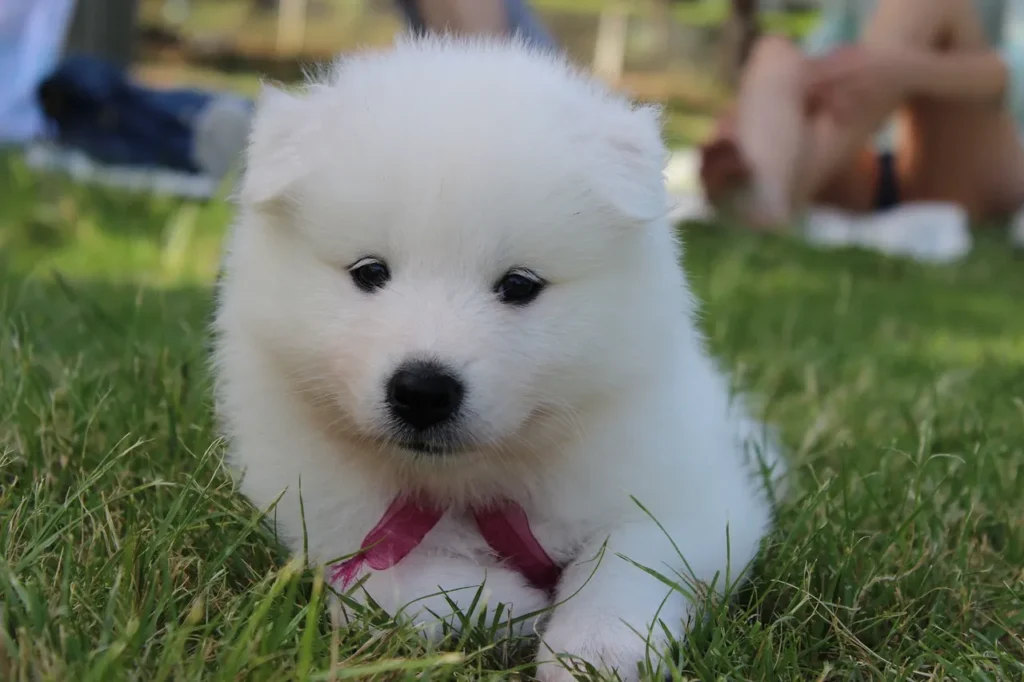
Factors that Affect the Price of Spitz Dog
Factors that Affect the Price of Spitz Dog:
- Breed and Pedigree: The specific Spitz breed and the pedigree of the dog play a significant role in determining the price. Purebred Spitz dogs with well-documented lineage and show-quality potential are often more expensive.
- Breeder Reputation: Reputable breeders who follow ethical breeding practices, provide proper healthcare, and prioritize the well-being of their dogs typically charge higher prices.
- Age: The age of the Spitzs can impact its price. Puppies are generally more expensive than adult dogs.
- Health and Vaccination: Spitz dogs with up-to-date vaccinations, health certifications, and regular vet check-ups may command higher prices due to their overall health and well-being.
- Coat Color and Markings: Some Spitz breeds have specific coat color preferences among buyers, and unique markings can affect the price.
- Geographic Location: The cost of Spitzs can vary significantly based on the region. In major cities or regions with high demand, prices tend to be higher.
- Availability: The rarity of a particular Spitz breed in a given region can affect its price. Less common breeds may be more expensive.
- Size: The size of the Spitz dog can influence the price. Smaller Spitz breeds, like Pomeranians, are often more expensive than larger breeds like Alaskan Malamutes.
- Training and Obedience: Spitzs that have undergone training or have specific skills, such as obedience training or agility training, may be priced higher.
- Companion vs. Show Dogs: Dogs intended for companionship are usually less expensive than those with show potential or a history of show successes.
Monthly Maintenance Cost of Spitz Dog:

The monthly maintenance cost of a Spitz dog can vary based on factors such as location, size of the dog, and individual preferences. Here are some common monthly expenses associated with owning a Spitz dog:
- Food: The cost of high-quality dog food can range from $20 to $60 or more per month, depending on the dog’s size and dietary requirements.
- Grooming: Regular grooming and brushing are essential for Spitz dogs with thick coats. Grooming costs may range from $20 to $50 per month.
- Healthcare: Monthly expenses for veterinary care, including routine check-ups, vaccinations, and preventive medications, can be approximately $20 to $50 or more.
- Training and Socialization: Costs for dog training classes or socialization activities can vary but typically range from $20 to $50 per month.
- Toys and Accessories: Expenses for toys, bedding, collars, and other accessories can add up to around $10 to $30 or more per month.
- Insurance: Some owners opt for pet insurance, which may cost between $20 and $50 per month, depending on coverage.
- Miscellaneous Costs: This category includes unexpected expenses, such as emergency vet visits, and can vary widely.
Facts about Spitz
Interesting Facts about Spitz that you must know:
- Diverse Origins: Spitz has originated from various parts of the world, including Europe, Asia, and the Arctic. This diverse background has contributed to the wide range of Spitz breeds with distinct characteristics.
- Distinctive Appearance: Pointed ears, bushy tails carried over the back, and thick double coats are common features among Spitz . These traits were often adapted to suit their original purposes, from cold weather protection to communication.
- Cold Climate Adaptations: Many Spitz breeds have evolved to thrive in cold climates. Their double coats provide insulation against freezing temperatures, and they often have webbed feet for efficient movement on snow and ice.
- Multifunctional Roles: Spitz have historically served various roles, including herding, hunting, sled pulling, guarding, and companionship. Their adaptability and intelligence make them versatile in different environments.
- Ancient Heritage: Some Spitz breeds, like the Finnish Spitz, have ancient origins dating back thousands of years. They’ve played integral roles in the daily lives of different cultures and civilizations.
- Loyal Companions: Despite their sometimes independent nature, Spitz form strong bonds with their families. They can be fiercely loyal, offering protection and affection to those they consider part of their pack.
- Vocal Communication: Many Spitz breeds are known for their vocalizations, using barks, howls, and other sounds to communicate. This trait often stems from their historical roles as working dogs in various tasks.
- Variety of Sizes: Spitz come in a range of sizes, from the small Pomeranian to the larger Alaskan Malamute. This size diversity means there’s likely a Spitz breed suitable for various living situations.
- High Energy Levels: Most Spitz breeds have abundant energy and require regular exercise and mental stimulation. Their active nature makes them excellent companions for outdoor activities and adventures.
- Cultural Significance: Some Spitz breeds hold cultural importance in their countries of origin. The Japanese Spitz, for instance, is beloved in Japan and symbolizes purity and loyalty.
- Endearing Smiles: The Samoyed, in particular, is known for its “Sammy smile,” created by the upturned corners of its mouth. This charming expression is a hallmark of the breed.
- Playful Personalities: Spitz often have playful and mischievous personalities, endearing them to families and individuals seeking an engaging and fun-loving companion.
Pros and Cons of Spitz Dogs
Some common pros and cons of Spitz that you might face are:
| Pros of Spitz | Cons of Spitz |
|---|---|
| 1. Loyal Companionship | 1. Independent Nature |
| 2. Versatile Abilities | 2. Potential Vocalization |
| 3. Strong Watchdogs | 3. High Energy Levels |
| 4. Adaptation to Cold | 4. Regular Grooming Needed |
| 5. Playful and Active | 5. Socialization Requirement |
| 6. Distinctive Appearance | 6. Potential for Barking |
| 7. Diverse Size Range | 7. Prone to Separation Anxiety |
| 8. Cultural Significance | 8. Requires Training |
| 9. Intelligent and Trainable | 9. Not Ideal for Apartments |
| 10. Historical Significance | 10. Shedding and Allergies |
| 11. Affectionate Bonds | 11. Specialized Exercise Needs |

Spitz Dog Training Guide
Training Spitz dogs can be challenging due to their independent nature, but with patience, consistency, and positive reinforcement, it is possible to train them effectively. Here are some tips:
- Start training early: Start training your Spitz dog as a puppy. Start with basic obedience commands such as sit, stay, come, and walk.
- Use Positive Reinforcement: Spitz dogs respond well to positive reinforcement such as treats, praise, and play. Reward your dog for good behaviour.
- Be consistent: Spitz dogs are stubborn, so it’s important to be consistent in your training methods. Use the same commands and techniques each time you train your dog.
- Firm but gentle: Spitz dogs can be sensitive, so it is important to be firm but gentle when training them. Avoid corporal punishment and yelling.
- Dog Interaction: Spitz dogs can be suspicious of strangers and other animals, so socialization is important. Introduce your dog to different people, animals, and environments from an early age.
- Dog Exercise: Spitz dogs are active and energetic and need regular exercise to stay healthy and happy. Walk your dog daily, provide opportunities to play, and consider activities such as hiking and running.
- Use a leash: Spitz dogs tend to run away, so always use a leash to protect your dog when walking or exercising.
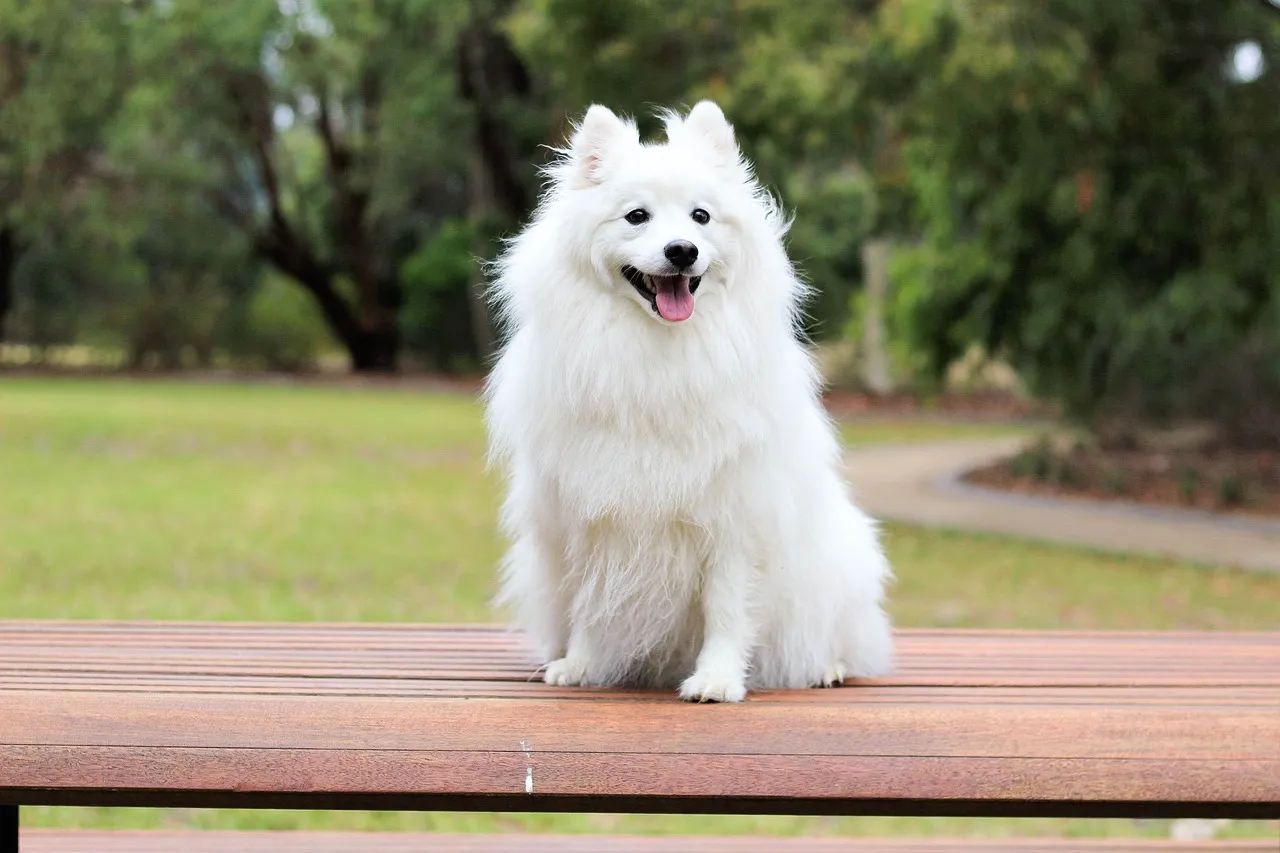
Care Tips for Spitz Dogs
Best Care Tips for Spitz Dogs:
- Grooming Routine: Due to their double coats, regular grooming is essential. Brushing helps prevent matting and removes loose hair. More frequent grooming during shedding seasons is recommended.
- Physical Activity: Spitz are energetic, so daily exercise is crucial. Engage in activities like walks, playtime, and mental stimulation to keep them happy and healthy.
- Socialization: Early and consistent socialization helps prevent shyness or aggressiveness. Expose your Spitz to different people, pets, and environments from a young age.
- Training: Positive reinforcement training works well with Spitz. They’re intelligent and respond to praise and rewards. Training helps channel their energy and prevent behavioural issues.
- Nutrition: Feed a balanced and appropriate diet for your Spitz’s age, size, and activity level. Consult with a veterinarian to ensure optimal nutrition.
- Healthcare: Regular veterinary check-ups, vaccinations, and preventive treatments are essential. Address any health concerns promptly to ensure a long and healthy life.

Health Issues of Spitz Dogs
Spitz dogs are generally healthy and robust, but like all breeds, they can be susceptible to certain health issues. It’s essential for Spitz dog owners to be aware of these potential health concerns and to work closely with veterinarians to maintain their pets’ well-being. Here are some of the health issues commonly associated with Spitz dogs:
- Hip Dysplasia: Hip dysplasia is a genetic condition that affects the hip joint, leading to lameness and arthritis. Regular exercise and maintaining a healthy weight can help reduce the risk.
- Eye Problems: Some Spitz breeds can be prone to eye conditions such as cataracts and progressive retinal atrophy (PRA). Regular eye exams are crucial for early detection and treatment.
- Patellar Luxation: Patellar luxation, or dislocation of the kneecap, is a condition that some Spitz dogs may be prone to. It can cause limping and pain.
- Allergies: Allergies, including food allergies and environmental allergies, can affect Spitz dogs, leading to skin irritation and discomfort.
- Obesity: Spitz dogs enjoy an active lifestyle, and overfeeding can lead to obesity, which can exacerbate various health issues. Maintaining a balanced diet and providing regular exercise is essential.
- Dental Problems: Dental issues, including periodontal disease, can be common in Spitz dogs. Regular dental care, such as brushing and dental chews, can help prevent these problems.
- Thyroid Disorders: Hypothyroidism, an underactive thyroid, can occur in some Spitz dogs. It can lead to weight gain, lethargy, and skin problems.
- Von Willebrand’s Disease: This is a bleeding disorder that affects the blood’s ability to clot. It can be inherited and should be tested for in susceptible breeds.
- Epilepsy: Some Spitz dogs may develop epilepsy, resulting in seizures. Medication can often help control the condition.
- Canine Bloat: Spitz dogs, like other deep-chested breeds, can be susceptible to gastric dilatation-volvulus (GDV), commonly known as bloat. This is a life-threatening condition and requires immediate veterinary attention.
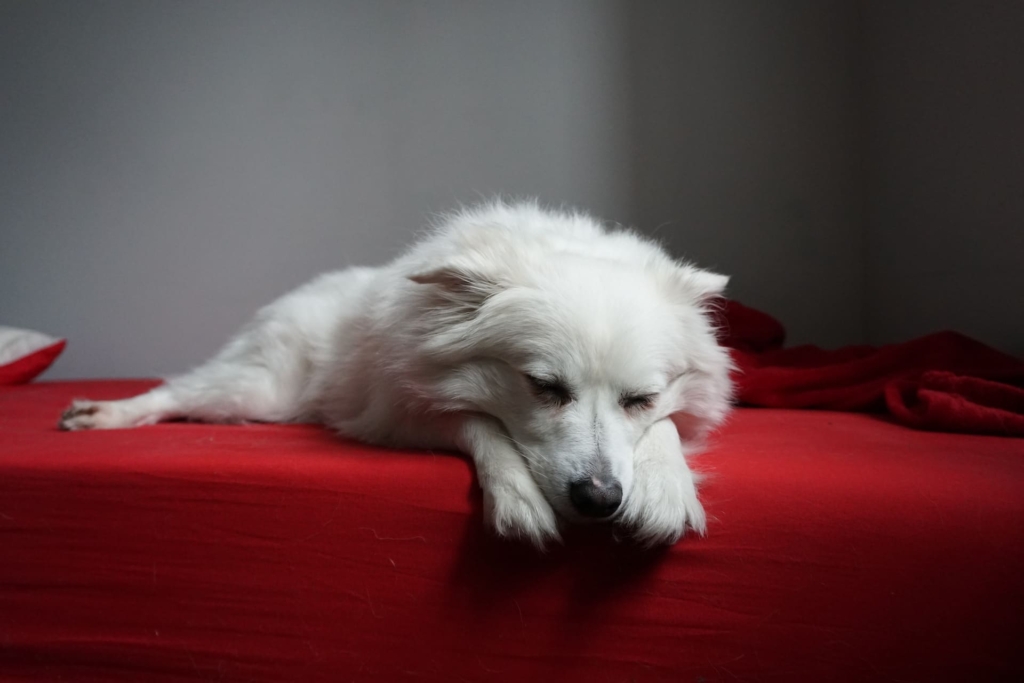
Spitz Dogs Lifespan
The lifespan of a Spitz dog can vary depending on factors such as breed, genetics, diet, and overall care. On average, most Spitz dog breeds have a lifespan of 12 to 15 years. Some may live longer, while others might have shorter lifespans.
Here’s an overview of the typical lifespan for some common Spitz dog breeds:
- Pomeranian: Pomeranians tend to have a relatively long lifespan, often reaching 12 to 16 years or more with proper care.
- Samoyed: Samoyeds typically live around 12 to 14 years, although some may reach 15 years or more.
- American Eskimo Dog: These dogs have a lifespan of about 12 to 15 years, with some living beyond that range.
- Alaskan Malamute: Malamutes usually have a lifespan of 10 to 14 years, but some may live slightly shorter or longer lives.
- Siberian Husky: Siberian Huskies typically live around 12 to 14 years, although some may reach 15 years or more with proper care.
- Japanese Spitz: Japanese Spitz dogs tend to live around 12 to 16 years, making them one of the longer-lived Spitz breeds.
- Akita Inu: Akita Inus have a lifespan of approximately 10 to 15 years, with proper care and attention to their health.
- Shiba Inu: Shiba Inus generally have a lifespan of 12 to 15 years, although individual lifespans can vary.

Food for Spitz Dog
Best Food for Spitz Dogs:
| Food for Spitz | Feeding Guidelines |
|---|---|
| 1. Commercial Dog Food | Follow the manufacturer’s guidelines for portion sizes based on your dog’s weight and activity level. Choose high-quality, breed-appropriate options. |
| 2. Homemade Meals | Consult a veterinarian or canine nutritionist to ensure a balanced diet with proper nutrients. Include lean proteins, whole grains, vegetables, and fruits. |
| 3. Raw Diet | Seek professional guidance. Ensure the diet is balanced, includes meat, organs, bones, and supplements if necessary. Avoid potential risks of bacterial contamination. |
| 4. Portion Control | Prevent obesity by measuring portions and adjusting based on your Spitz weight and activity. Treats should be limited and factored into the daily caloric intake. |
| 5. Hydration | Provide fresh water at all times to keep your Spitz hydrated. Adjust water intake during hot weather or after exercise. |
Dog Names Japanese Spitz
Popular Dog Names for Japanese Spitz:
| Male Names | Female Names |
|---|---|
| 1. Hiro | 1. Sakura |
| 2. Kuma | 2. Yuki |
| 3. Sora | 3. Hana |
| 4. Mochi | 4. Miko |
| 5. Kota | 5. Mei |
| 6. Kai | 6. Nami |
| 7. Hiroshi | 7. Emi |
| 8. Taro | 8. Yumi |
| 9. Koji | 9. Suki |
| 10. Ren | 10. Kimi |
Spitz Dog Care and Training Video
Conclusion:
In conclusion, Spitz dogs embody a diverse group of breeds with unique characteristics, histories, and care requirements. From their distinctive appearance to their loyalty and versatility, Spitz have left an indelible mark on the world of canine companionship. Whether you’re drawn to their cultural significance, energetic nature, or charming personalities, Spitz continue to captivate the hearts of dog enthusiasts worldwide. Proper care, attention to their health, and a loving environment ensure that these remarkable breeds thrive and bring joy to countless families and individuals.

Frequently Asked Questions:
-
What are the different sizes of Spitz dogs?
Spitz come in a variety of sizes, ranging from small to large. Some examples include the tiny Pomeranian, medium-sized American Eskimo Dog, and larger breeds like the Alaskan Malamute and Samoyed.
-
Are Spitz dogs good for families with children?
Yes, many Spitz breeds are known for their friendly and playful nature, making them great companions for families with children. However, proper socialization and supervision are important to ensure a harmonious relationship.
-
Do Spitz shed a lot?
Yes, most Spitz have thick double coats that shed seasonally. Regular grooming and brushing can help manage shedding and keep their coats healthy.
-
Are Spitz easy to train?
Spitz are intelligent and can be trained effectively using positive reinforcement methods. However, their independent nature might require patient and consistent training efforts.
-
What are common health issues in Spitz dogs?
Spitz can be prone to conditions like hip dysplasia, eye problems, dental issues, and skin allergies. Regular veterinary check-ups, a balanced diet, and proper care can help prevent and manage these health concerns.
-
Are Spitz good for apartment living?
Some Spitz breeds can adapt well to apartment living if given sufficient exercise and mental stimulation. However, their energy levels might require regular outdoor activities.
-
Are Spitz dogs good guard dogs?
Many Spitz breeds have a protective nature and can make effective watchdogs. They are often alert and vocal, which can deter potential intruders.
-
How much exercise do Spitz dogs need?
Spitz are generally energetic and require daily exercise. Engage them in activities like walks, playtime, and mental challenges to keep them happy and healthy.
-
What is the average lifespan of Spitz?
The average lifespan of Spitz varies by breed, but most Spitz breeds live around 12 to 16 years with proper care and a healthy lifestyle.
-
Are Spitz good for first-time dog owners?
Some Spitz breeds can be suitable for first-time dog owners, provided they are committed to proper training, socialization, and care. Breeds with more trainable and less independent personalities might be better choices.
Recommended –
- Bullmastiff Dog | Breed Profile, Price, Types, 10 Facts, Care Tips, Health
- Alaskan Malamute | Breed Profile, Price, Types, 10 Facts, Care Tips, Health
- German Spitz Vs Pomeranian: A Comprehensive Comparison
- German Spitz Price In India (2023) | Breeds, Types, Care
- Indian Spitz Price in India, USA, UK – 2023 | Care Tips, Food, Grooming
- Siberian Husky Price (Feb 2023)| Daily Cost, Care Tips, Food and Facts
- Pitbull Dog Price (Feb 2023)| Daily Cost, Care Tips, Food, and Facts





























